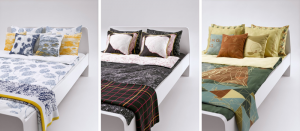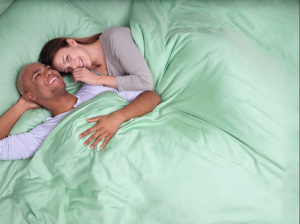
By Ebru Bayramoglu
As we adapt to living life from home due to COVID-19, consumer expectations for performance and quality in home textiles are changing rapidly. Even before we adjusted to our “new normal” at home, we were set to spend nearly half our lifetime in bed, making home textiles one of the most in-demand types of textile fabrics in our lives.
Despite the newfound focus on our health and the wellbeing of our planet in 2020, environmentally friendly home textiles have yet to sweep this segment in the same way as others in the fashion industry. As times are changing, a new generation of sustainable-first consumers are coming of age, ushering in a new era of eco-friendly home textiles.
New Generations Reshaping Home Textiles
Younger generations coming of age now have a more robust understanding of the burden the fashion and textile industry historically placed on the environment. These generations are putting an end to spur of the moment purchase choices in favor of carefully considered, curated pieces that are kind on the environment.
Earlier this year, Lenzing put this theory to the test with its “Global Consumer Perception Survey” and found that of the 9,000 respondents surveyed globally, over 70 percent are actively educating themselves on sustainability before making bedding and home textile purchases. Forbes’ recent “The State of Consumer Spending: Gen Z Shoppers Demand Sustainable Retail” report underscored Lenzing’s findings, observing that a majority of Gen-Z prefer to buy from sustainable brands.
Additionally, younger generations won’t shy away from forgoing brands entirely where more sustainable alternatives exist in the market, with the Forbes report findings showed that 54 percent of Gen-Z and 50 percent of millennials are willing to spend 10 percent or more on sustainable products.
These trends indicate sustainability will be the leading incentive for consumer purchase decisions in many years to come, and home textiles companies that don’t make the leap will be left behind.

A Sustainable Transition
There has never been a better time to commence the journey toward sustainability. With environmental focus at an all-time high, and production temporarily slowed due to the ongoing COVID-19 pandemic, home textiles brands have a crucial window of opportunity to reassess their business models and current environmental status to implement sustainable practices across product lines.
Today, there are three major way brands can inject sustainability into their business including the use of recycled fabrics, sustainable fibers and ground-breaking eco-friendly production processes designed to minimize waste. Adding the sustainability factor into the mix may seem like a daunting task, but many companies across the home textiles value chain are already using these methods in their product production.
For example, HBF Textiles, a U.S manufacturer and supplier of fabric products, has created its Crafted Cloud fabric for upholstery made from 70 percent rapidly renewable content. Similarly, UK based consumer bedding company, Fine Bedding, produces the Smartdown Duvet, created from fibers made with recycled plastic bottles. From a fiber producer perspective, Lenzing’s TENCEL™ brand pioneered the REFIBRA™ technology that upcycles cotton scraps by mixing them with wood-based cellulose from renewable sources and producing sustainable fibers using a closed-loop production process reusing over 99 percent of solvents and water.
To unify environmentally friendly home textiles and eco-conscious younger consumers, the TENCEL™ brand also created the BEDifferent project for young designers to craft their own bedding collections with ethical fibers. The goal was to empower younger generations, encourage their commitment toward using sustainable materials and crucially, inspire other textile producers to consider how they can implement new bedding concepts with sustainability front of mind into their business pipelines.
The journey to sustainability is a long marathon, not a sprint, and evolutionary change should always begin with actionable steps toward the goal of reducing a brand’s environmental impact. Fortunately, many home textiles brands have already commenced a positive shift and a growing base of eco-conscious consumers, making this trend on track to increase exponentially. After all, when home textiles like bedding are produced with love for the environment, consumers can sleep soundly knowing they are resting sustainably.
Editor’s Note: Ebru Bayramoglu is head of Global Business Development Home and Interiors, Lenzing
January 21, 2021





